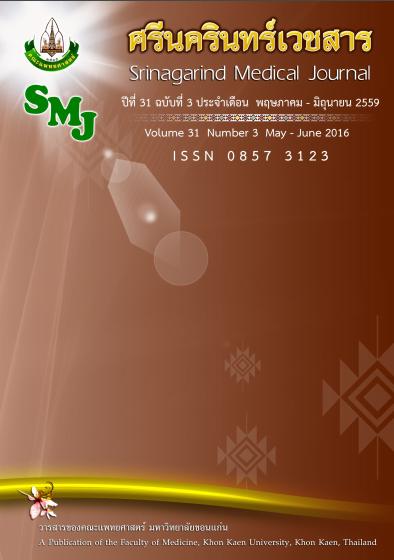Relationship between Walking Symmetry and Ability of Community Walking of Ambulatory Patients with Spinal Cord Injury
Keywords:
Walking symmetry, Rehabilitation, Neurological patients, Physical therapyAbstract
Background and Objective: Asymmetrical walking increases energy demand, walking speed and distance covered of the patients. However, the information was reported in patients with unilateral impairment such as stroke or amputee. In contrast, patients with spinal cord injury (SCI) have bilateral impairment. A study on this information may provide important clue for the improvement of rehabilitation strategies for these patients. The results may be important for develop plan of treatment in the patients. This study explored the relationship between walking symmetry and variables relating to community walking including walking speed and distance in ambulatory patients with SCI.
Method: This study cross-sectionally conducted in 16ambulatory subjects with SCI. The subjects were assessed in their walking symmetry, walking speed and distance covered. Then the findings were analyzed by using Pearson correlation coefficients.
Results: Walking symmetry of the subjects which was reported using the step length ratio was approximately 85%. The walking symmetry had moderate relationship to walking speed and distance (r=0.687and 0.746 for walking speed and distance, respectively, p<0.005).
Conclusion: Ambulatory subjects with SCI still have walking asymmetry (asymmetrical ratio more than 6%) and walking symmetry is important for ability of community walking. Hence, apart from levels of walking, physiotherapists and other rehabilitation professionals may need to emphasize on the improvement of walking symmetry of the patients.




